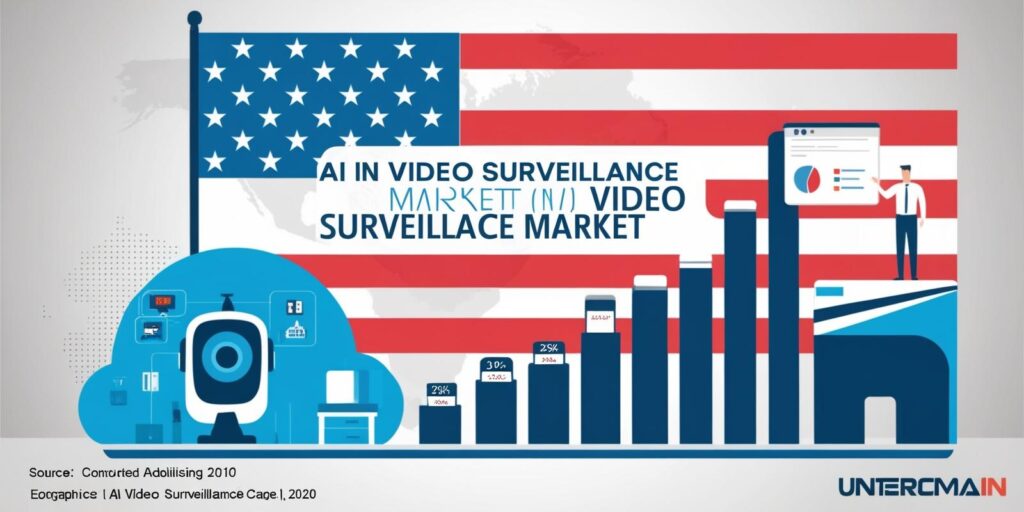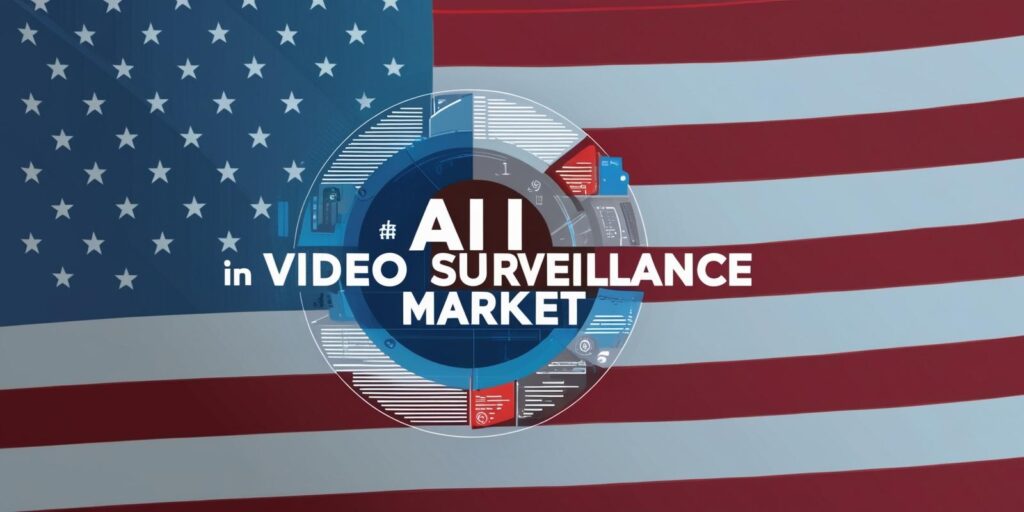The imposition of tariffs during the Trump administration had a profound impact on various industries, including video surveillance. While many businesses faced disruptions in their supply chains, rising costs, and changing trade dynamics, some sectors, particularly artificial intelligence (AI) in video surveillance, found new opportunities for growth. The tariffs on Chinese imports prompted many companies to rethink their strategies, and in doing so, AI-driven video surveillance emerged as a key player in the market.
Explore the 10 key opportunities for growth in AI in video surveillance that were sparked by the Trump-era tariffs.
1. Shift Toward Domestic Manufacturing
Opportunity: As tariffs increased the cost of importing Chinese-made components for surveillance systems, many companies sought to reshore or nearshore their manufacturing operations. This shift allowed AI-driven surveillance companies to develop more localized solutions.
Why It Matters: By manufacturing domestically or closer to home, businesses could reduce reliance on overseas suppliers, mitigate the risk of future tariff increases, and control production timelines better. This move also opened up new business opportunities in local markets.
2. Increased Demand for Smart Security Solutions
Opportunity: The tariffs and their economic impact led many businesses to focus more on cost-effective and efficient solutions, including AI-powered video surveillance systems that can automate monitoring and enhance security.
Why It Matters: AI-driven surveillance systems are more effective than traditional methods because they can analyze video feeds in real time, detect anomalies, and even predict potential threats. The need for more efficient, scalable security solutions boosted the adoption of AI in video surveillance.
3. AI-Powered Surveillance Systems for Cost Reduction
Opportunity: Tariffs on imported components drove up the cost of traditional surveillance systems. This led many companies to explore AI-driven systems that, despite higher initial costs, can reduce the need for human labor and lower operational costs over time.
Why It Matters: AI video surveillance systems can process vast amounts of data with minimal human intervention. They automate processes such as threat detection, reducing the need for constant human oversight, which translates to long-term cost savings.
Request Trump Tariff Threat Assessment Analysis Now @ https://www.marketsandmarkets.com/pdfdownloadNew.asp?id=84216922

4. Growth in Cloud-Based AI Solutions
Opportunity: With increasing pressure on companies to cut costs and improve scalability, many shifted towards cloud-based video surveillance solutions. The flexibility of the cloud combined with AI analytics enabled businesses to offer more affordable and scalable solutions.
Why It Matters: Cloud-based AI surveillance systems allow companies to store and process data off-site, reducing the need for costly on-premise hardware and ensuring more efficient use of resources. The scalability of these solutions also means companies can expand their security operations without significant upfront investment.
5. Integration with Other AI Technologies
Opportunity: The challenges posed by tariffs accelerated the integration of AI video surveillance with other AI-driven technologies such as facial recognition, anomaly detection, and predictive analytics.
Why It Matters: Integrating these technologies into video surveillance systems makes them more versatile and effective in detecting potential security threats. As businesses sought more sophisticated surveillance options, the ability to deploy a range of AI tools in a single system became an attractive feature.
6. Improved Data Security and Privacy
Opportunity: With concerns about security breaches and data privacy increasing, AI video surveillance systems offered enhanced encryption and secure storage methods, addressing some of the concerns caused by the growing surveillance economy.
Why It Matters: As video surveillance systems collect sensitive data, AI can enhance security by ensuring only authorized access to video feeds and data. This improved data security builds trust and is an attractive selling point for businesses concerned about cybersecurity.
7. Expansion of AI Surveillance in Critical Infrastructure
Opportunity: As global trade relations became more uncertain, there was an increased focus on protecting critical infrastructure, including power grids, transportation hubs, and government buildings. AI-powered surveillance systems offered an effective solution to safeguard these assets.
Why It Matters: AI-based video surveillance is particularly effective in monitoring and securing critical infrastructure, as it can process large amounts of data in real time, detect suspicious activity, and alert authorities before a security breach occurs.

8. AI in Retail and Public Spaces
Opportunity: The growing need for security in retail and public spaces during uncertain times pushed businesses to adopt AI-driven surveillance. Video analytics can help detect theft, identify loitering, or track customer behaviors, providing valuable insights into operations.
Why It Matters: Retailers and businesses in public spaces benefit from AI-powered systems because they not only enhance security but also provide valuable data that can be used to improve store layouts, customer experiences, and overall operational efficiency.
9. AI-Driven Video Analytics for Law Enforcement and Public Safety
Opportunity: AI’s ability to quickly analyze video footage made it an invaluable tool for law enforcement agencies. The adoption of AI video surveillance systems was accelerated to support crime prevention, traffic monitoring, and public safety efforts.
Why It Matters: AI video analytics can help law enforcement agencies identify criminal activity, track suspects, and solve cases faster than traditional methods. As governments looked for more efficient ways to enhance public safety, the demand for AI-driven surveillance systems soared.
10. Advancements in Edge Computing for Real-Time Processing
Opportunity: As the volume of data generated by video surveillance systems increased, there was a surge in demand for edge computing. Edge AI allows for real-time video processing at the source, reducing latency and the reliance on centralized cloud storage.
Why It Matters: Edge computing reduces the need to send large amounts of video data to the cloud for processing, which speeds up response times and decreases bandwidth usage. It enables more efficient and immediate analysis, which is critical for time-sensitive security situations.
Key Takeaways:
Domestic Manufacturing Shift: The Trump-era tariffs encouraged reshoring and nearshoring of production, giving AI-driven video surveillance companies more control over production and reducing reliance on overseas suppliers.
Cost-Effective, AI-Powered Solutions: AI video surveillance systems offer long-term cost savings by automating monitoring and reducing the need for human labor, making them an attractive alternative in the face of rising costs from tariffs.
Cloud Integration and Scalability: The shift toward cloud-based AI solutions provided more affordable, scalable, and flexible surveillance options, helping businesses manage growing data and improve operational efficiency.
Enhanced Security Features: AI surveillance systems helped improve data security and privacy by offering advanced encryption and secure storage, building trust with customers.
Expanded Use Across Sectors: From critical infrastructure to retail and public spaces, AI-powered surveillance systems became essential for protecting assets, preventing crime, and enhancing operational insights.
Advanced Analytics for Public Safety: AI-driven video analytics helped law enforcement and public safety agencies by providing faster identification of criminal activity and improving crime prevention.
Edge Computing for Real-Time Processing: The rise of edge computing allowed AI systems to process data on-site, reducing latency and bandwidth usage, making surveillance systems more efficient and responsive.
Conclusion: A Future Shaped by AI in Video Surveillance
The Trump-era tariffs may have caused disruption, but they also pushed industries, including video surveillance, to innovate and explore new technologies. The growth of AI in video surveillance presents businesses with numerous opportunities to enhance security, reduce costs, and provide cutting-edge solutions that can adapt to the challenges of a rapidly changing global landscape. By capitalizing on these opportunities, companies can position themselves as leaders in the next generation of intelligent security systems. The future of video surveillance is undoubtedly AI-driven, and those who embrace this shift will be well-positioned to thrive in the evolving market.
Related Reports:
AI in Video Surveillance Market by Offering (AI Camera, Video Management System, Video Analytics), Deployment (Cloud, Edge), Technology (Machine Learning, Deep Learning, GenAI, Computer Vision, Natural Language Processing) – Global Forecast to 2030